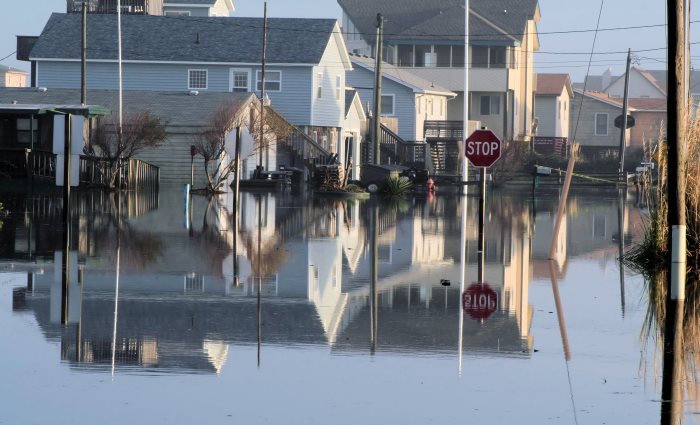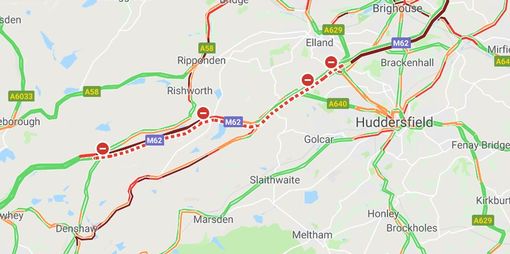Flood Alerts Explained: Understanding Flood Warnings And Staying Safe

Table of Contents
Different Types of Flood Alerts and Warnings
Understanding the different types of flood alerts is the first step in effective flood preparedness. Knowing the difference between a watch, advisory, and warning can mean the difference between being prepared and being caught off guard.
What is a Flood Watch?
A flood watch means that conditions are favorable for flooding to occur. It's not a guarantee that flooding will happen, but it's a strong indication that you should be vigilant and prepared.
- Action: Monitor weather conditions closely. Pay attention to local news and weather reports.
- Preparation: Begin gathering your emergency supplies (see below). Locate and review your family's evacuation plan and identify alternative routes. Check on vulnerable neighbors.
What is a Flood Advisory?
A flood advisory indicates that flooding is occurring or is imminent in your area. The situation is more serious than a watch, requiring immediate attention.
- Action: Take precautions. If you live in a flood-prone area, consider moving valuables to higher ground.
- Preparation: Avoid driving through flooded areas, as even shallow water can be deceptively dangerous. Be ready to evacuate if necessary.
What is a Flood Warning?
A flood warning signifies that flooding is happening now or will happen very soon. This is the most serious alert and requires immediate action.
- Action: Evacuate immediately if instructed by local authorities. Move to higher ground and avoid contact with floodwaters.
- Preparation: Follow instructions from emergency services. Do not attempt to drive through floodwaters. Seek higher ground and stay informed through official channels.
Understanding the Severity of Flood Alerts (Color-Coded Systems)
Many regions utilize color-coded systems to communicate the severity of flood alerts. For example, a system might use:
- Green: No significant flood risk.
- Yellow: Potential flood risk; monitor conditions.
- Orange: High flood risk; prepare for potential evacuation.
- Red: Severe flood risk; immediate evacuation is necessary.
It's crucial to understand your local color-coded system and what actions are associated with each color. Familiarize yourself with your region's specific flood warning system.
How to Stay Safe During a Flood
Effective flood safety involves preparation before, during, and after a flood event. Proactive measures can significantly reduce the risks involved.
Before the Flood: Preparation is Key
Proactive preparation is the cornerstone of flood safety.
- Family Communication Plan: Designate an out-of-area contact person for family members to check in with.
- Flood Emergency Kit: Include essential items like water, non-perishable food, first-aid supplies, medications, flashlights, batteries, a portable radio, and important documents in a waterproof container.
- Evacuation Routes and Shelters: Identify multiple safe evacuation routes and locate the nearest designated shelters.
- Elevate Possessions: Move valuable items to upper floors or higher ground to protect them from flood damage.
- Flood Insurance: Consider purchasing flood insurance, even if you don't live in a high-risk area, as flooding can occur unexpectedly.
During the Flood: Prioritize Safety
Your safety is paramount during a flood.
- Evacuate: Move to higher ground immediately if instructed by authorities.
- Avoid Floodwaters: Floodwaters can be contaminated with sewage and hazardous materials, and hidden dangers may be present beneath the surface.
- Utilities: Turn off gas, electricity, and water if instructed to do so by authorities.
- Driving: Never drive through flooded areas; the water depth may be deceiving.
- Monitoring: Continuously monitor weather reports and official alerts for updates.
After the Flood: Recovery and Assessment
Post-flood recovery requires careful attention to safety and potential hazards.
- Avoid Floodwaters: Even after the flood has subsided, floodwaters can remain contaminated and electrically charged.
- Structural Damage: Inspect your home for structural damage before entering.
- Reporting: Report damage to your local authorities and insurance company.
- Cleaning and Sanitation: Follow recommended cleaning and sanitation procedures to prevent the spread of disease.
Utilizing Technology for Flood Alerts
Technology plays a significant role in receiving timely and accurate flood alerts.
Weather Apps and Websites
Reliable weather apps and websites (e.g., AccuWeather, The Weather Channel) provide up-to-date weather forecasts and severe weather alerts, including flood warnings.
Emergency Alert Systems
Wireless Emergency Alerts (WEA) and other emergency alert systems can send urgent warnings directly to your mobile device. Ensure your device is properly set up to receive these alerts.
Local Government Websites and Social Media
Check your local government's website and social media channels for flood-related updates, evacuation orders, and safety information.
Flood Monitoring Systems and Real-time Data
Some areas have flood monitoring systems providing real-time data on river levels and potential flood risks. Utilize these resources if available.
Conclusion
Understanding and heeding flood alerts and warnings is paramount for protecting yourself and your community. By preparing in advance, understanding the different warning levels, and knowing how to react appropriately, you significantly reduce the risk of flood-related harm. Remember to stay informed about flood alerts in your area by utilizing the available resources and always prioritize your safety. Don't wait until it's too late—proactively prepare for flood events and build a comprehensive flood safety plan to protect yourself and your family. Learn more about flood alerts and flood safety today.

Featured Posts
-
 Memorial Day 2025 Air Travel Avoid These Busy Dates
May 25, 2025
Memorial Day 2025 Air Travel Avoid These Busy Dates
May 25, 2025 -
 2nd Edition Best Of Bangladesh In Europe Drives Collaboration For Future Growth
May 25, 2025
2nd Edition Best Of Bangladesh In Europe Drives Collaboration For Future Growth
May 25, 2025 -
 Significant Delays On M6 Southbound Following Crash
May 25, 2025
Significant Delays On M6 Southbound Following Crash
May 25, 2025 -
 Burys Missing Link Exploring The Planned M62 Relief Road
May 25, 2025
Burys Missing Link Exploring The Planned M62 Relief Road
May 25, 2025 -
 Flash Flood Watch Texas North Central Areas At High Risk
May 25, 2025
Flash Flood Watch Texas North Central Areas At High Risk
May 25, 2025
Latest Posts
-
 Naomi Campbells Potential Absence From Met Gala 2025 Truth Behind The Wintour Feud Claims
May 25, 2025
Naomi Campbells Potential Absence From Met Gala 2025 Truth Behind The Wintour Feud Claims
May 25, 2025 -
 Did Anna Wintour Ban Naomi Campbell From The Met Gala The 2025 Controversy
May 25, 2025
Did Anna Wintour Ban Naomi Campbell From The Met Gala The 2025 Controversy
May 25, 2025 -
 Naomi Campbell Reportedly Banned From Met Gala 2025 The Story Behind The Headlines
May 25, 2025
Naomi Campbell Reportedly Banned From Met Gala 2025 The Story Behind The Headlines
May 25, 2025 -
 Is Naomi Campbell Banned From The 2025 Met Gala A Look At The Wintour Feud Speculation
May 25, 2025
Is Naomi Campbell Banned From The 2025 Met Gala A Look At The Wintour Feud Speculation
May 25, 2025 -
 Met Gala 2025 Will Naomi Campbell Be Absent Due To Wintour Dispute
May 25, 2025
Met Gala 2025 Will Naomi Campbell Be Absent Due To Wintour Dispute
May 25, 2025
